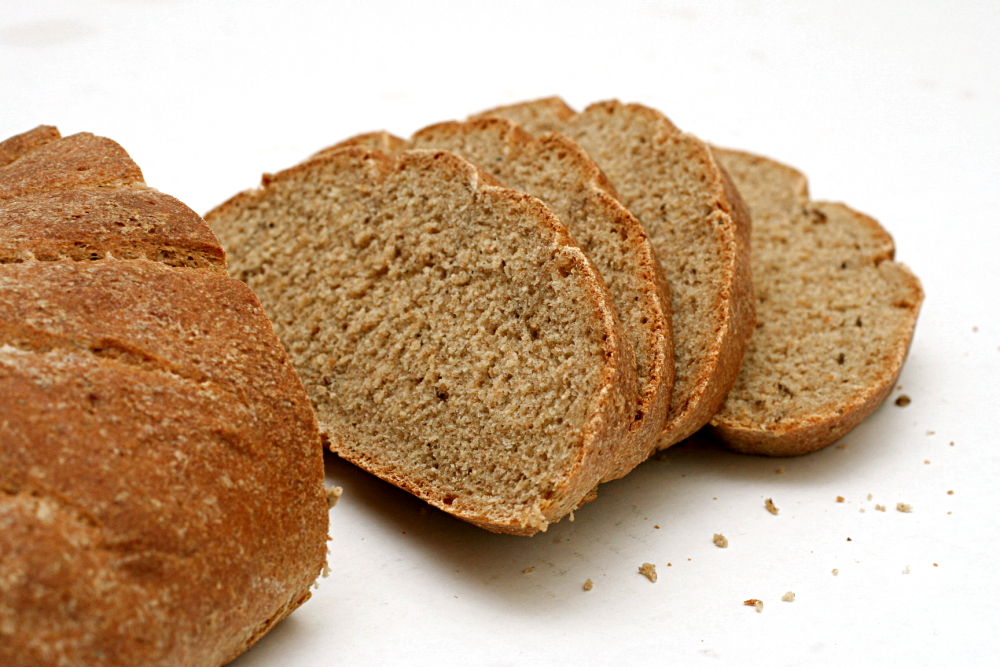
Last week I was at the grocery store with my parents, trying to choose a dessert to bring home to share. My dad wanted strawberry cake, and my mom wanted German chocolate cake. I wasn’t going to get in the middle of this, and honestly, I don’t know why my dad even offers his opinion. Dessert is a decision that my mom will always get to make.
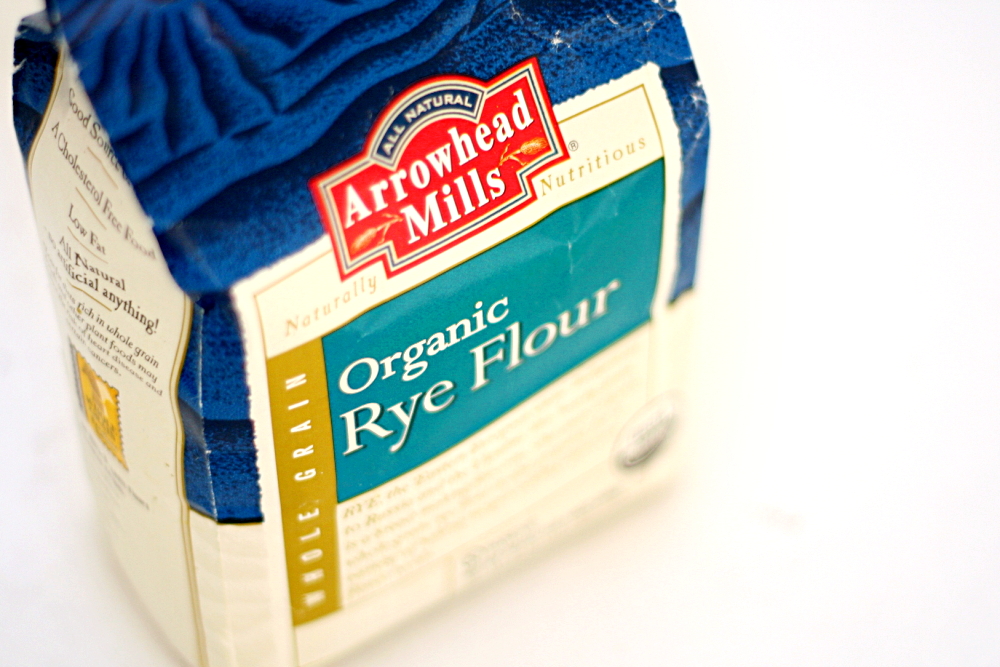
Apparently that apple doesn’t fall far from the tree, because Dave and I were recently choosing a menu item to split to go with our pot of mussels – he wanted a reuben, and I wanted smoked duck salad. Of course we got salad, but only after I promised to make Dave a reuben at home.
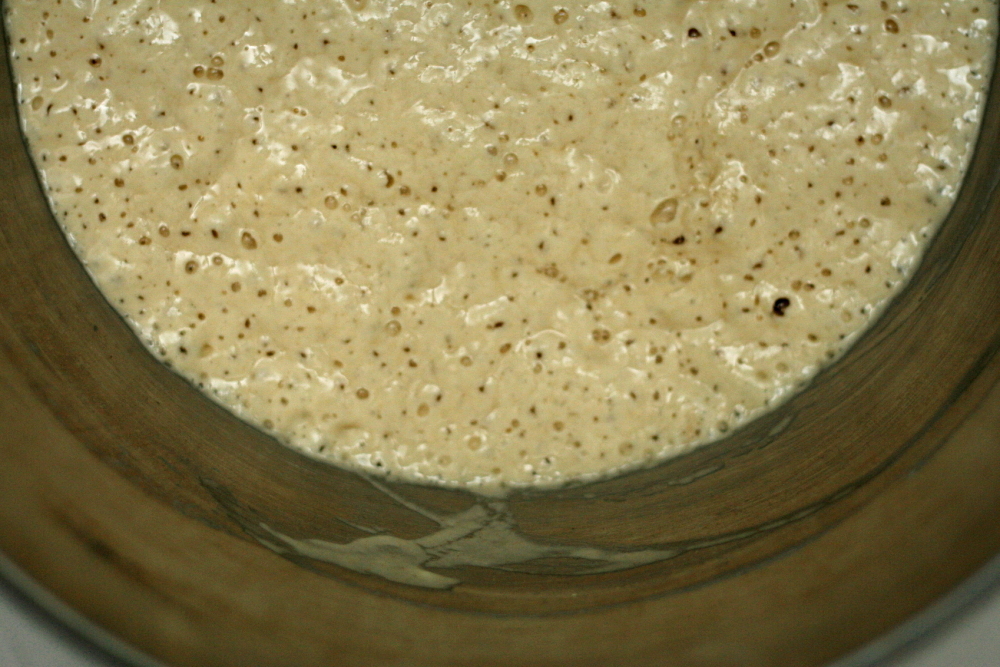
First I had to make rye bread. I was inundated with recipes – Peter Reinhart has several, and King Arthur’s Flour has far too many to choose between. I thought that Cooks Illustrated’s recipe would be a safe bet for my first time making rye bread.
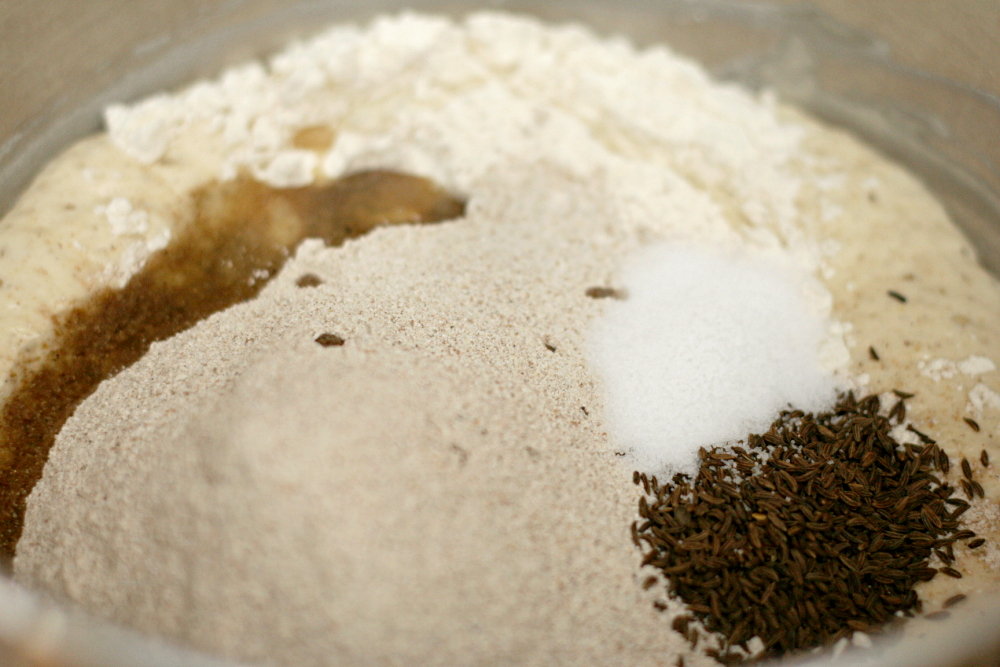
One of the reasons I like CI for my first time attempting something is the specific instructions they offer. Not just rye flour, but medium or light rye flour. If only I had had so many options. After searching my grocery store, the only rye flour I could find was organic and whole grain, and forget the rye flakes that the recipe also recommends.
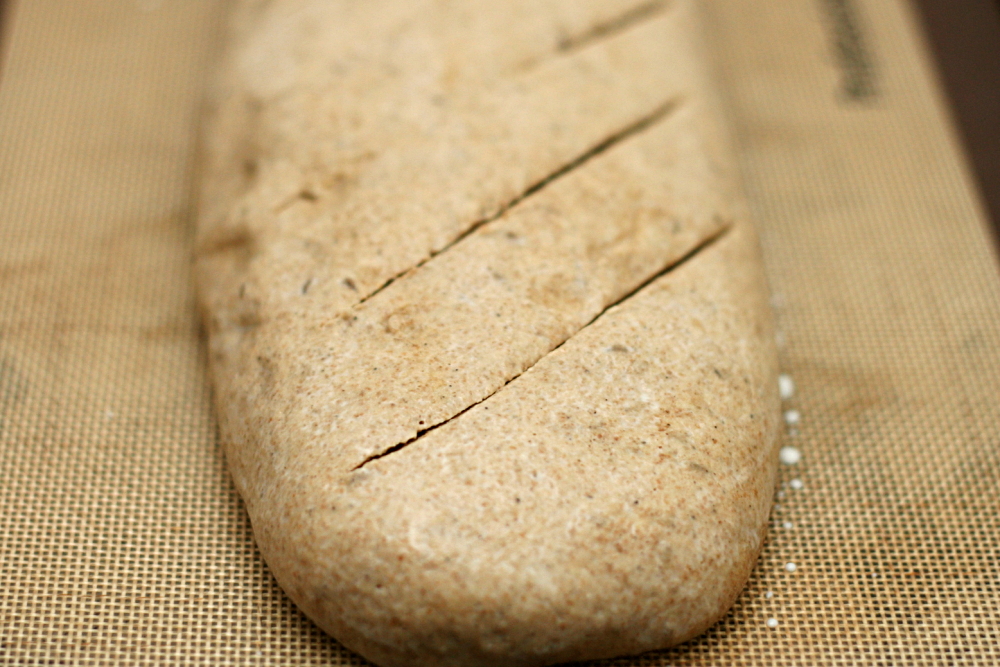
I was concerned that my bread would be a flop due to the whole grain flour, and it didn’t help that the dough’s texture was different from what I’m used to. It seemed heavier and less elastic. The rising times were longer than what the recipe indicates, which I’m attributing to the whole grain flour.
Fortunately, it all worked out, and this made some very good bread – a little bitter from the rye and scented from the caraway seeds, and firm enough to hold up to a sandwich without being unpleasantly dense. It made for some exceptionally good reubens.
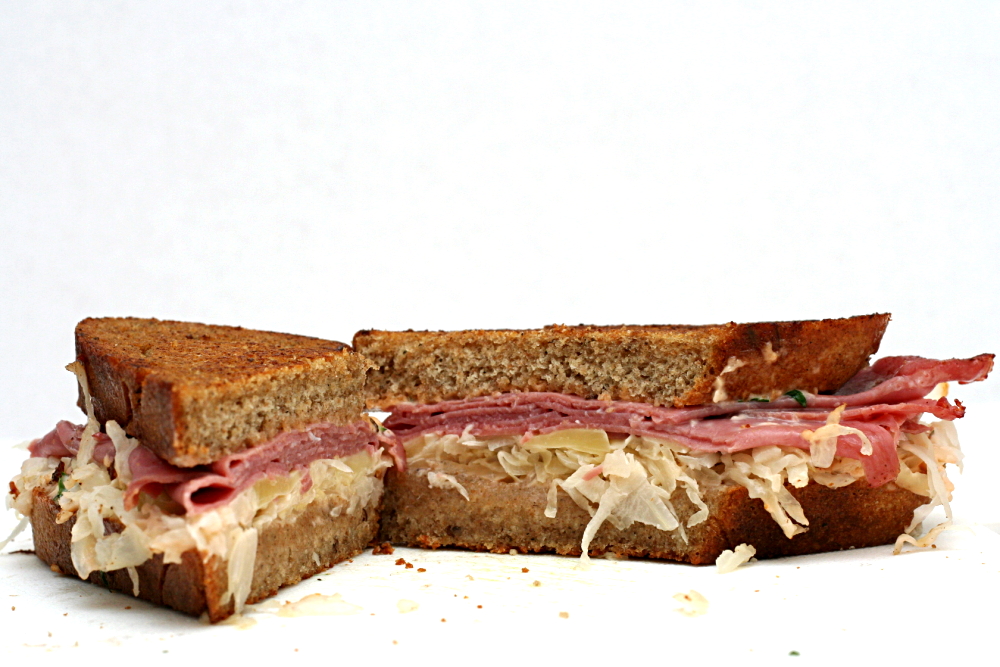
One year ago: Lemon Poppy Seed Muffins – I have a batch of these in my freezer right now. I had one yesterday.
Deli-Style Rye Bread (from Cooks Illustrated)
Makes 1 large loaf
This is half of Cooks Illustrated’s original recipe. I have no idea why their original recipe makes such a huge amount of bread. This seems more practical.
Sponge:
⅓ cup rye flakes (optional)
1⅞ cups water, at room temperature
¾ teaspoon instant yeast
1 tablespoon honey
1½ cups (7½ ounces) unbleached all-purpose flour
Dough:
¾ cups (3¾ ounces) unbleached all-purpose flour, plus more for dusting the work surface
1¾ cups (6.125 ounces) medium or light rye flour
1 tablespoon caraway seeds
1 tablespoon vegetable oil
1½ teaspoon salt
Glaze:
1 egg white
1 tablespoon milk
1. For the sponge: Heat the oven to 350 degrees; toast the rye flakes, if using, on a small baking sheet until fragrant and golden brown, 10-12 minutes. Cool to room temperature. Mix the water, yeast, honey, rye flakes, and flour in the mixing bowl of a standing mixer to form a thick batter. Cover with plastic wrap and let sit until bubbles form over the entire surface, at least 2½ hours. (The sponge can stand at cool room temperature overnight.)
2. For the dough: Stir the all-purpose flour, 1 ½ cups of the rye flour, the caraway seeds, oil, and salt into the sponge. Attach the dough hook and knead the dough at low speed, adding the remaining rye flour once the dough becomes cohesive; knead until smooth yet sticky, about 5 minutes. With moistened hands, transfer the dough to a well-floured work surface, knead into a smooth ball, then place it in a very lightly oiled large bowl or straight-sided container. Cover with plastic wrap and let rise at warm room temperature until doubled in size, 1½ to 2 hours.
3. Generously sprinkle the cornmeal on a large baking sheet. Turn the dough onto a lightly floured work surface and press it into a 6 by 9-inch rectangle. With the long side facing you, roll the dough into a 9-inch log, seam-side up. Pinch the seam with your fingertips to seal. Turn the dough seam-side down, and, with your fingertips, seal the ends by tucking them into the loaf. Carefully transfer the shaped loaf to the prepared baking sheet, cover loosely with oiled plastic wrap, and let rise until the dough looks bloated and dimply and starts to spread out, 60-75 minutes. Adjust an oven rack to the lower-middle position and heat the oven to 425 degrees.
4. For the glaze: Whisk the egg white and milk together and brush over the sides and top of the loaf. Right before baking, make 6 or 7 slashes, ½-inch deep, in the top of the dough with a single-edge razor blade or a very sharp knife. Bake for 15 minutes, then lower the oven temperature to 400 degrees and bake until golden brown and an instant-read thermometer inserted in the center of the loaf reads 200 degrees, 15-20 minutes. Transfer to a wire rack and cool to room temperature.
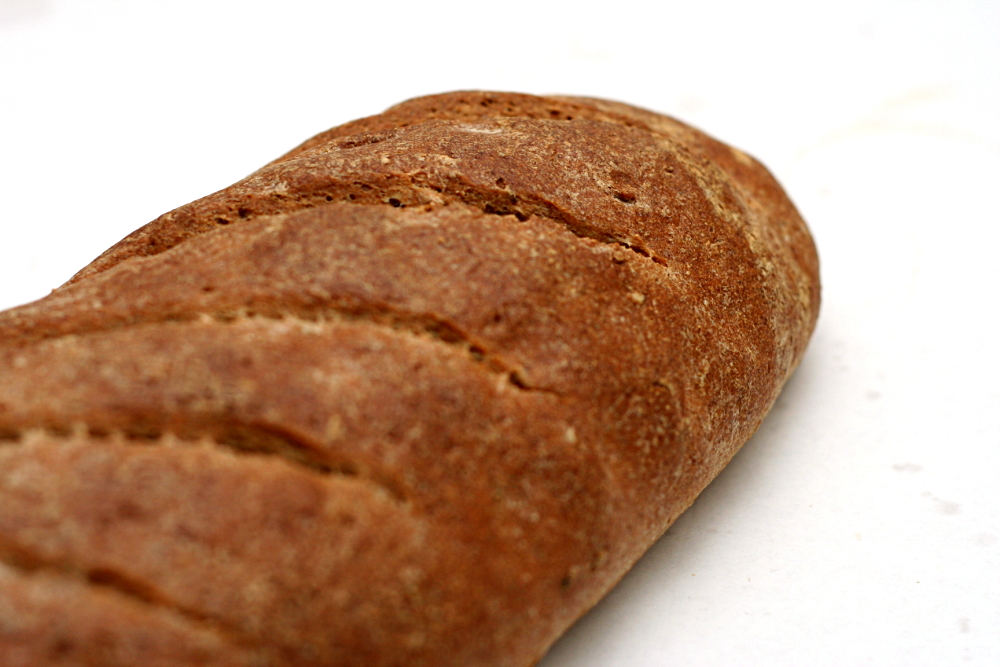






I am definitely trying this…we love Rye bread and I haven’t thought to attempt it yet…this looks GREAT!!! I love your pictures!
Oooh yum – classic!
I’m not a huge fan of reubens but I LOVE rye bread! Yum!
I LOVE rye bread and reubens. Thanks for the great post, Bridget!
Great pictures. Your bread looks wonderful. I always have great luck with recipes from Cooks Illustrated too!
That is some good looking bread. I love baking bread, but haven’t made rye yet.
This looks like a beautiful loaf of bread! My husband likes rye bread and I bet he would like this.
My hubby would love this! Your bread is lovely and really looks like it’s from a bakery!
Rye bread is one of my favorites, second only to sourdough… but I’ve never made either! Yours looks fabulous, though, and so does the sandwich.
Looks tasty! Lovely photos.
I just made this and it didn’t work perfectly. I am not new to bread baking and followed the recipe exactly. I noticed the dough was a bit too wet and when the recipe said to shape it on the counter there was not way that was going to happen-it was like a thick cake batter at that point. I kneaded in some extra flour the best I could and proceeded. After baking it for an extra 10 minutes, I gave up and let it cool. The center sunk because it was not done all the way. Your photo of your dough before baking is definitely not what mine looked like… it could not even hold its own shape, and I used the exact same rye flour as you did. However, it tastes absolutely wonderful! It just isn’t pretty looking. I am surprised too because Cooks Illustrated has no never let me down.
Meg – How weird! Did you measure the flour by volume or weight? I always measure by weight. Cook’s Illustrated recipes always use 5 ounces (regular) flour per 1 cup, which is quite a bit higher than normal. When I measure by volume, it’s usually closer to 4.5 ounces per cup. So if you measured by volume, you might not have used as much flour as I did. Otherwise, I just don’t know what could have happened. I’m glad it still tasted good though!
I love rye bread and made this recipe a few months back. Like you I could only find the same whole grain rye, and I also used the rye flakes. What happened was, I stripped a gear on my kitchen aid mixer making this dough! ARGH. The bread was a little heavy but delicious.
I love rye bread and this one looks utterly delicious. You did an amazing job, looks like it came straight from a pro’ bakery. I have bookmarked the recipe for future reference 🙂
Hi!
First of all, I want to thank you, because it’s your blog that taught about adapting recipes to be whole wheat! I’ve been playing with my bread recipes ever since and mostly results are great.))
My question is following – how do you think, can this method be applicable to using rye flour?